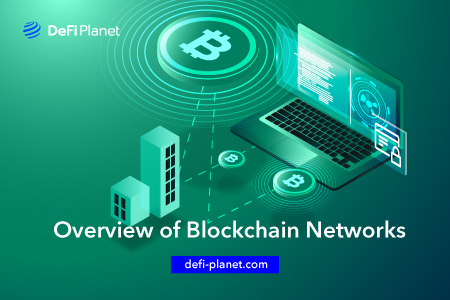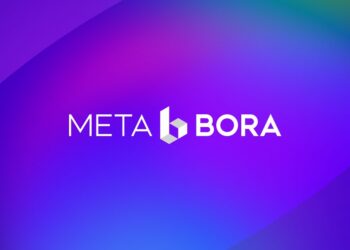Some blockchain networks are solving the blockchain trilemma, with different elements and versions of the PoS consensus mechanism. This article analyzes the history, structure, and utility of Near Protocol, Cardano, Polkadot, and Harmony One.
Near Protocol
Near Protocol is a network that is focused on solving the blockchain trilemma and the scalability issue evident in Ethereum 1.0. It utilizes sharding technology to scale the network as activities increase on the chain and a Proof-of-Stake consensus mechanism.
History of Near Protocol
Near Protocol did not start as a blockchain technology platform, instead, its initial concept was to work as a machine learning platform. The machine learning ecosystem was created in 2017 by Illia Polosukhin and Alexander Skidanov, and it went by the name, Near.ai.
During their research, they found out about blockchain technology, and its residents- cryptocurrencies and smart contracts. With this development, they decided to explore this novel field.
After analyzing the numerous chains in existence at the time, they concluded that the existing solutions were not in line with what they wanted to achieve. This birthed the concept of Near Protocol, a blockchain that utilized sharding to scale.
Both founders were interested in developing a highly scalable network that catered to the needs of developers. They wanted to create a blockchain that could support a myriad of advanced decentralized apps without being congested like Ethereum.
Architecture
Almost every new generation blockchain has an underlying purpose of solving the scalability issue noticed in Ethereum. Scalability demonstrates a network’s capacity to support a wide range of activities and transactions without compromising fees or speed.
Two schools of thought exist when it comes to Ethereum 1.0’s inability to scale. The first category believes in creating scaling solutions like Layer 2 platforms that work with Ethereum to solve the problem. The second school of thought includes NEAR Protocol, which beliefs in creating an entirely different blockchain that is not dependent on Ethereum.
Near Protocol solves the dreaded scalability issue via sharding. Sharding divides the network into different classes or shards, which reduces the computational load. When a blockchain utilizes this principle, every node in the network is not supposed to participate in every activity or run every code, instead, they are involved in the code or activities that relate to their shard. Each shard operates parallel with one another.
The consensus mechanism of Near Protocol is Proof-of-Stake, which uses validators to verify transactions. To become a validator, the token holder must bind the native tokens with the network. Validators are chosen via an auction mechanism, and those with a larger amount of delegated tokens have a higher chance of being chosen. Usually, the auction period occurs after every twelve hours.
Based on the sharding system, different validators have varying roles in the network. A set is responsible for verifying the transactions assigned to a shard. The second group produces the blocks in the chain, while the last category monitors the network to ensure that everything functions effectively. Validators in the last category are called fishermen.
Utility of Near Protocol
As a blockchain, Near Protocol is designed to be developer-friendly. It offers a highly scalable network and a suite of development tools that can be utilized by developers to build decentralized apps. Different types of decentralized ecosystems can be built from scratch on Near Protocol, from decentralized finance platforms to NFT projects.
Harmony (ONE)
Harmony is a blockchain that acts as a bridge between decentralization and scalability. Their architecture focuses on offering low latency and fees to developers and average users.
History of Harmony
Harmony One began its journey in 2018 and was founded by Stephen Tse, a serial founder with a network in the tech sector. Tse has been linked with Google, Apple, and other big tech organizations. During the conceptualization stage of the blockchain, he created a team of professional engineers to develop a high-performing, decentralized and scalable network.
In 2019, the blockchain organized its Initial Exchange Offering (IEO) on the Binance Launchpad in May 2019.
Architecture
Sharding, on Harmony, divides the network into three categories, which are state sharding, network sharding, and transaction sharding. Using this technique ensures that the blockchain is highly scalable, with high throughput and low gas fees.
State sharding means that every shard has its database and blocks. With cross-shard interaction, the network curbs any sign of double-spending. In-network sharding, every shard has validators that interact with one another to ensure that consensus is reached. Validators are also allowed to send cross-shard messages when necessary.
As a way of achieving scalability, the Harmony network assigns different transactions to various shards. Every shard has a list of transactions that they verify, instead of validating all transactions that occur in the network. This means that each shard works parallel with others, thereby improving the throughput of the network.
After an epoch of about 18.2 hours, which translates to 32768 blocks, a new set of Validator committees is chosen. Immediately an epoch culminates, an election of a new validator committee begins.
Harmony One, during its research and analysis of existing blockchain consensus mechanisms, decided to opt for Fast Byzantine Fault Tolerance (FBFT).
Validator nodes are not involved in vote broadcasting, and they are chosen based on the number of native tokens they hold. There is a directly proportional relationship between the number of tokens that a node has and the probability of being chosen.
Utility of Harmony ONE
Harmony is a decentralized blockchain with low transaction fees, high scalability, and fast transaction speed because it implemented the sharding mechanism. It is a haven for developers that want to build decentralized apps such as decentralized finance protocols, NFT projects, Decentralized Autonomous Organizations, etc. Token holders can either stake tokens or become a validator to earn income.
Cardano
Cardano is a Proof-of-Stake (PoS) network that uses a unique mechanism called Ouroboros, which was analyzed by academia. It has been in the eyes of the academic world for peer review and insights concerning the modification and progression of the network.
History of Cardano
Cardano was founded by one of the co-founders of Ethereum, Charles Hoskinson. Hoskinson, as part of the team behind the notable smart contract compatible network, understood the drawbacks of Ethereum and decided to solve them by creating Cardano. The development process began in 2015.
The Cardano Foundation, IOHK, and EMURGO oversee the development of the Cardano ecosystem. IOHK handles the technical development of the blockchain while offering educational services.
The Cardano Foundation oversees the brand name and visibility in the world. It interacts with leaders in the field and government agencies as regards the development of the blockchain globally. EMURGO has the task of ensuring that the Cardano network is adopted by businesses globally. It attracts developers to build on the network.
Architecture
Cardano utilizes Ouroboros, which is a unique variant of the Proof-of-Stake consensus mechanism. To ensure scalability, Ouroboros divides periods into epochs, which are further shared into slots. Every slot lasts for a second, while an epoch ends after five days. Immediately an epoch culminates, a new one begins.
Each slot has a leader that is selected at random, though it considers those with a higher stake in the network. Once a slot leader is elected, they verify transactions, create blocks, and add them to the network.
Cardano added the smart contract feature on its network via the Alonzo upgrade, which will allow developers to create their decentralized apps. Users can seamlessly mint NFTs.
Polkadot
Polkadot, like the other blockchains on this list, is building a network that is solving the blockchain trilemma as well as the scalability issues observed in Ethereum.
Unlike the other networks, Polkadot uses a unique system to achieve this called parachains. It is made up of a relay chain that monitors the parachains, which are user-created networks.
Parachains are an element of Polkadot that allows developers to create their custom blockchain on Polkadot while using the consensus mechanism of the relay chain. Developers can tailor their parachains to their taste, and even create a blockchain that others can utilize in building decentralized apps.
Polkadot offers developers the freedom to customize parachains to a certain level. With this design, users can carry out more private and scalable transactions, without disclosing private data to the public.
Parachains are leased out during an auction period, where different project teams have to bid to get a parachain. Usually, the bidding process involves binding native tokens, DOT, to the network. Winners are chosen at random, and those that lose can access their once bound tokens. As for the winners, the bound tokens remain inaccessible until the lease period ends.
Projects can crowdfund DOT tokens for this purpose, and they have to pay interest to contributors through different means such as airdropping tokens to the contributors.
History
A co-founder of Ethereum, Gavin Wood, founded Polkadot in 2016. He partnered with Peter Czaban and Robert Habermeier to achieve this feat. Wood is notable in the blockchain field because he invented the programming language behind Ethereum, Solidity. He filled the role of Ethereum’s Chief Technology Officer, at the development stage.
Architecture
Polkadot works differently from the other networks listed above. It functions through the interaction among the relay chain, parachains, and the bridge.
The relay chain is the main blockchain, where transactions are finalized. It monitors the operations of the numerous parachains on the network. The consensus mechanism used by the Relay chain is a variant of PoS, which is NPoS or the nominated-proof-of-stake.
Parachains are customized chains tailored by developers to achieve their needs. They rely on the relay chain for security and consensus mechanisms.
The third aspect of the Polkadot network is the bridge. Bridges connect Polkadot with other blockchains like Ethereum.
Utility
A core use case of Polkadot lies in its independent nature of the Parachains. Developers are free to customize the Parachains into blockchains or even decentralized apps. It can be coded to achieve different purposes, as long as it keeps to the guidelines of the Relay Chain.
In Conclusion,
- Polkadot, Cardano, Near, and Harmony are trying to solve the blockchain trilemma.
- The networks use different variants of the Proof-of-Stake network to achieve consensus.
- They are focusing on creating a developer-friendly network for users to create innovations.
- In comparison to Ethereum, the aforementioned networks are yet to reach the amount of activity required to prove the effectiveness of their scalability theory.
If you want to read similar articles like this, follow DeFi Planet on Twitter, Facebook and LinkedIn.





















